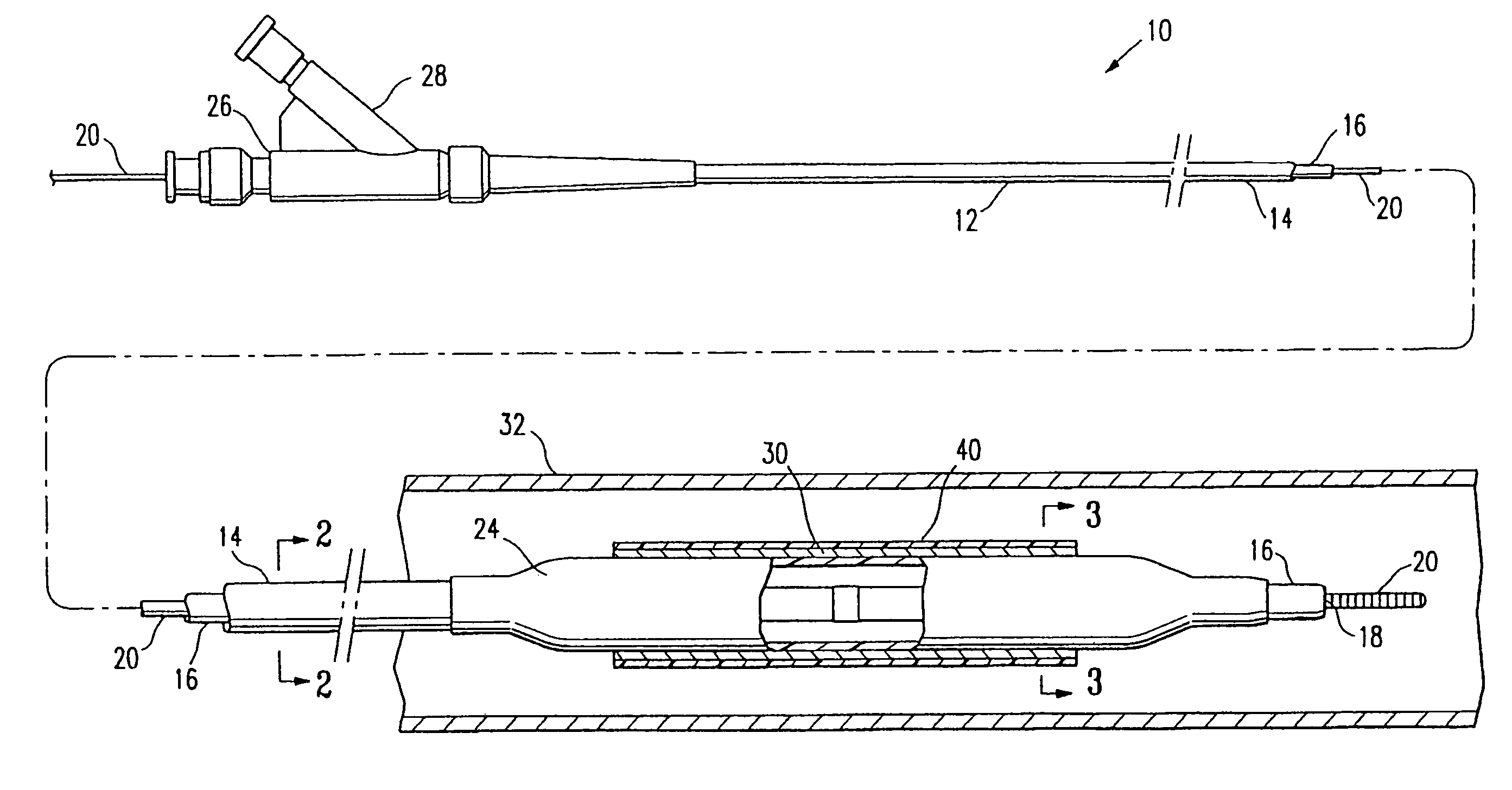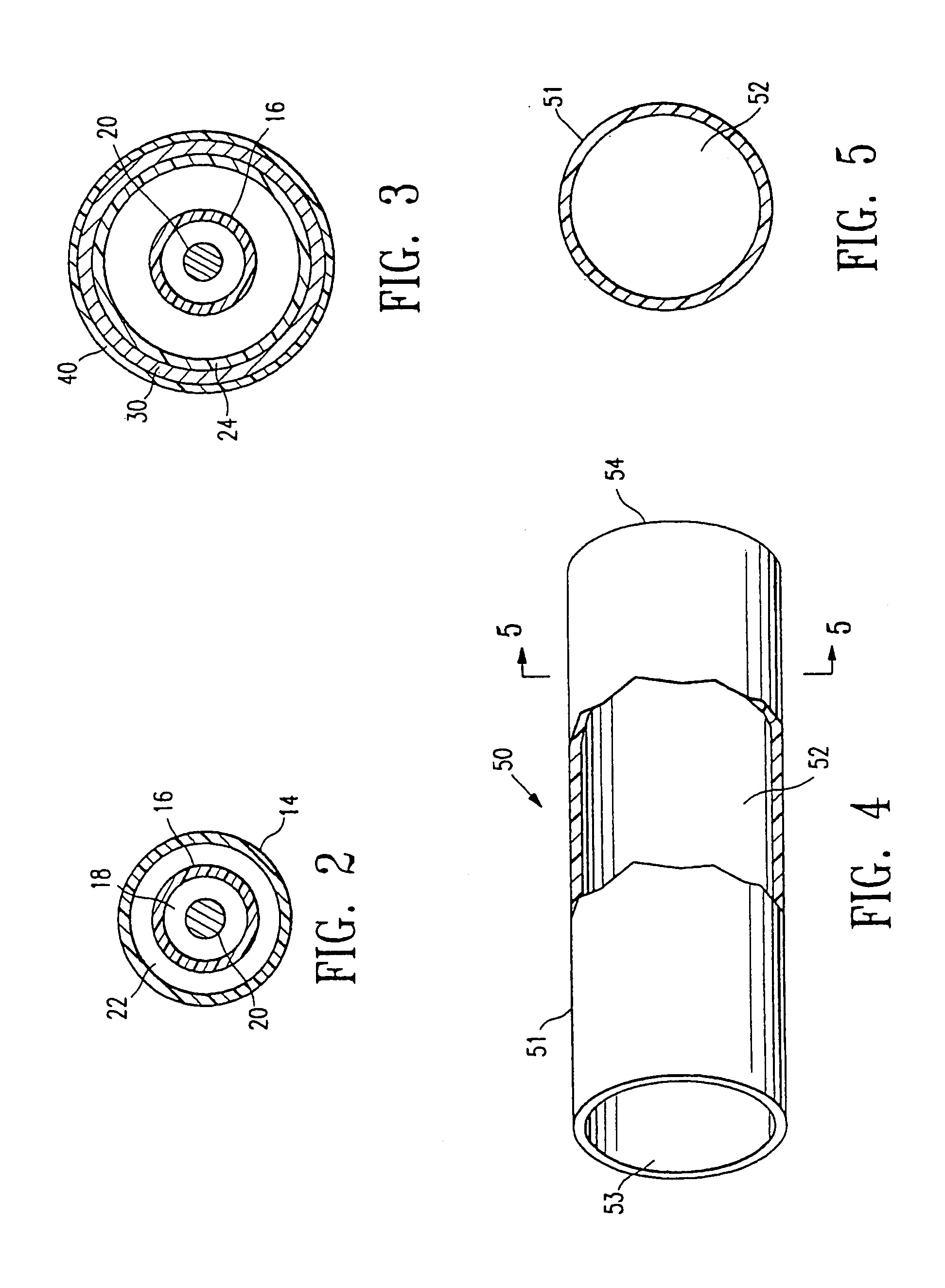Medical device formed of polyester copolymer
a technology of polyester copolymer and medical device, applied in the field of medical device, can solve problems such as vessel wall trauma, achieve the effects of improving performance characteristics such as flexibility, trackability, strength, compliance, and flexibility, and increasing flexibility and compliance of balloons
- Summary
- Abstract
- Description
- Claims
- Application Information
AI Technical Summary
Benefits of technology
Problems solved by technology
Method used
Image
Examples
Embodiment Construction
[0019]FIGS. 1–3 illustrate an over-the-wire type stent delivery balloon catheter 10 embodying features of the invention. Catheter 10 generally comprises an elongated catheter shaft 12 having an outer tubular member 14 and an inner tubular member 16. Inner tubular member 14 defines a guidewire lumen 18 adapted to slidingly receive a guidewire 20. The coaxial relationship between outer tubular member 14 and inner tubular member 16 defines annular inflation lumen 22 (see FIGS. 2 and 3, illustrating transverse cross sections of the catheter 10 of FIG. 1, taken along lines 2—2 and 3—3 respectively). An inflatable balloon 24 is disposed on a distal section of catheter shaft 12, having a proximal shaft section sealingly secured to the distal end of outer tubular member 14 and a distal shaft section sealingly secured to the distal end of inner tubular member 16, so that its interior is in fluid communication with inflation lumen 22. An adapter 26 at the proximal end of catheter shaft 12 is ...
PUM
| Property | Measurement | Unit |
|---|---|---|
| inflation pressure | aaaaa | aaaaa |
| inflation pressure | aaaaa | aaaaa |
| pressures | aaaaa | aaaaa |
Abstract
Description
Claims
Application Information
 Login to View More
Login to View More - R&D
- Intellectual Property
- Life Sciences
- Materials
- Tech Scout
- Unparalleled Data Quality
- Higher Quality Content
- 60% Fewer Hallucinations
Browse by: Latest US Patents, China's latest patents, Technical Efficacy Thesaurus, Application Domain, Technology Topic, Popular Technical Reports.
© 2025 PatSnap. All rights reserved.Legal|Privacy policy|Modern Slavery Act Transparency Statement|Sitemap|About US| Contact US: help@patsnap.com



